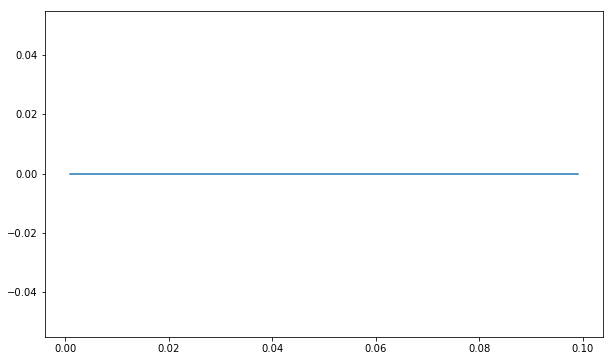Language Model Exercises
Contents
Language Model Exercises#
In these exercises you will extend and develop language models. We will use the code from the notes, but within a python package lm.
Setup 1: Load Libraries#
%load_ext autoreload
%autoreload 2
%matplotlib inline
import sys, os
_snlp_book_dir = ".."
sys.path.append(_snlp_book_dir)
from statnlpbook.lm import *
from statnlpbook.ohhla import *
# %cd ..
import sys
sys.path.append("..")
import matplotlib
import matplotlib.pyplot as plt
import pandas as pd
matplotlib.rcParams['figure.figsize'] = (10.0, 6.0)
---------------------------------------------------------------------------
ModuleNotFoundError Traceback (most recent call last)
Input In [1], in <cell line: 7>()
5 _snlp_book_dir = ".."
6 sys.path.append(_snlp_book_dir)
----> 7 from statnlpbook.lm import *
8 from statnlpbook.ohhla import *
9 # %cd ..
ModuleNotFoundError: No module named 'statnlpbook'
$$ \newcommand{\prob}{p} \newcommand{\vocab}{V} \newcommand{\params}{\boldsymbol{\theta}} \newcommand{\param}{\theta} \DeclareMathOperator{\perplexity}{PP} \DeclareMathOperator{\argmax}{argmax} \newcommand{\train}{\mathcal{D}} \newcommand{\counts}[2]{#_{#1}(#2) } $$
Setup 2: Load Data#
docs = load_all_songs("../data/ohhla/train/www.ohhla.com/anonymous/j_live/")
assert len(docs) == 50, "Your ohhla corpus is corrupted, please download it again!"
trainDocs, testDocs = docs[:len(docs)//2], docs[len(docs)//2:]
train = words(trainDocs)
test = words(testDocs)
Task 1: Optimal Pseudo Count#
Plot the perplexity for laplace smoothing on the given data as a function of alpha in the interval [0.001, 0.1] in steps by 0.001. Is it fair to assume that this is a convex function? Write a method that finds the optimal pseudo count alpha number for laplace smoothing for the given data up to some predefined numerical precision epsilon under the assumption that the perplexity is a convex function of alpha. How often did you have to call perplexity to find the optimum?
Tips: You don’t need 1st or 2nd order derivatives in this case, only the gradient descent direction. Think about recursively slicing up the problem.
oov_train = inject_OOVs(train)
oov_vocab = set(oov_train)
oov_test = replace_OOVs(oov_vocab, test)
bigram = NGramLM(oov_train,2)
interval = [x/1000.0 for x in range(1, 100, 1)]
perplexity_at_1 = perplexity(LaplaceLM(bigram, alpha=1.0), oov_test)
def plot_perplexities(interval):
"""Plots the perplexity of LaplaceLM for every alpha in interval."""
perplexities = [0.0 for alpha in interval] # todo
plt.plot(interval, perplexities)
def find_optimal(low, high, epsilon=1e-6):
"""Returns the optimal pseudo count alpha within the interval [low, high] and the perplexity."""
print(high, low)
if high - low < epsilon:
return 0.0 # todo
else:
return 0.0 # todo
plot_perplexities(interval)
find_optimal(0.0, 1.0)
1.0 0.0
0.0

Task 2: Sanity Check LM#
Implement a method that tests whether a language model provides a valid probability distribution.
def sanity_check(lm, *history):
"""Throws an AssertionError if lm does not define a valid probability distribution for all words
in the vocabulary."""
probability_mass = 1.0 # todo
assert abs(probability_mass - 1.0) < 1e-6, probability_mass
unigram = NGramLM(oov_train,1)
stupid = StupidBackoff(bigram, unigram, 0.1)
print(sum([stupid.probability(word, 'the') for word in stupid.vocab]))
sanity_check(stupid, 'the')
1.0647115579930904
Task 3: Subtract Count LM#
Develop and implement a language model that subtracts a count $d\in[0,1]$ from each non-zero count in the training set. Let’s first formalise this:
\begin{align} #{w=0}(h_n) &= \sum{w \in V} \mathbf{1}[\counts{\train}{h_n,w} = 0]\ #{w>0}(h_n) &= \sum{w \in V} \mathbf{1}[\counts{\train}{h_n,w} > 0]\ \prob(w|h_n) &= \begin{cases} \frac{\counts{\train}{h_n,w} - d}{\counts{\train}{h_n}} & \mbox{if }\counts{\train}{h_n,w} > 0 \ \frac{???}{\counts{\train}{h_n}} & \mbox{otherwise} \end{cases} \end{align}
class SubtractCount(CountLM):
def __init__(self, base_lm, d):
super().__init__(base_lm.vocab, base_lm.order)
self.base_lm = base_lm
self.d = d
self._counts = base_lm._counts # not good style since it is a protected member
self.vocab = base_lm.vocab
def counts(self, word_and_history):
if self._counts[word_and_history] > 0:
return 0.0 # todo
else:
return 0.0 # todo
def norm(self, history):
return self.base_lm.norm(history)
subtract_lm = SubtractCount(unigram, 0.1)
oov_prob = subtract_lm.probability(OOV, 'the')
rest_prob = sum([subtract_lm.probability(word, 'the') for word in subtract_lm.vocab])
print(oov_prob + rest_prob)
sanity_check(subtract_lm, 'the')
perplexity(subtract_lm, oov_test)
0.0
inf
Task 4: Normalisation of Stupid LM#
Develop and implement a version of the stupid language model that provides probabilities summing up to 1.
class StupidBackoffNormalized(LanguageModel):
def __init__(self, main, backoff, alpha):
super().__init__(main.vocab, main.order)
self.main = main
self.backoff = backoff
self.alpha = alpha
def probability(self, word, *history):
return 0.0 # todo
less_stupid = StupidBackoffNormalized(bigram, unigram, 0.1)
print(sum([less_stupid.probability(word, 'the') for word in less_stupid.vocab]))
sanity_check(less_stupid, 'the')
perplexity(less_stupid, oov_test)
0.0
inf


